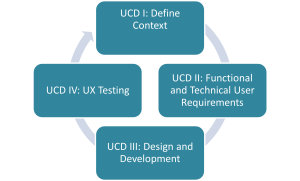Prototypical development and user experience testing of a tablet-based medication reminder with carers of dementia patients
Aim and Research Question(s)
This master thesis aims to design and evaluate a tablet-based medication reminder prototype that supports elderly and carers of dementia patients. By integrating the system into a KNX smart home environment, it seeks to improve medication adherence, promote independence, and ensure intuitive, accessible interaction through user-centered design. (RQ1): What are the key functional and technical requirements for developing a tablet-based medication reminder system for elderly and carers of dementia patients, based on existing literature? (RQ2): How do five carers of dementia patients and five elderly evaluate the usability and interaction satisfaction of a tablet-based medication reminder prototype using the System Usability Scale (SUS) and the Questionnaire for User Interaction Satisfaction (QUIS)?
Background
Medication management is a growing challenge in home care, particularly for elderly and carers of dementia patients. Existing digital solutions often fail to meet the specific usability needs of these vulnerable groups due to limited adaptability, unclear interfaces, or lack of integration. Research highlights the importance of intuitive design, multimodal feedback, and system personalization. Leveraging KNX smart home technology offers a promising path toward context-aware, responsive systems that can bridge cognitive barriers and support routine healthcare tasks effectively.[1]
Methods
 A user-centered design approach was applied. Functional and technical requirements were derived from a literature review. Based on these, the prototype was designed using Figma and developed in Visual Studio Code. It was integrated into a KNX smart home system via the Control-L module, enabling light and sound-based medication reminders. Usability testing was conducted with five carers and five elderly users, using the System Usability Scale (SUS) and the Questionnaire for User Interaction Satisfaction (QUIS) to assess user experience and system performance.
A user-centered design approach was applied. Functional and technical requirements were derived from a literature review. Based on these, the prototype was designed using Figma and developed in Visual Studio Code. It was integrated into a KNX smart home system via the Control-L module, enabling light and sound-based medication reminders. Usability testing was conducted with five carers and five elderly users, using the System Usability Scale (SUS) and the Questionnaire for User Interaction Satisfaction (QUIS) to assess user experience and system performance.
Results and Discussion
The prototype was positively received by both elderly and carers. SUS scores were high (85 carers, 70 elderly), and QUIS feedback confirmed usability and satisfaction. Key strengths included clear menus, intuitive interaction, and effective multimodal reminders. Carers valued fast access, elderly highlighted readability. Limitations include a small, homogenous sample. Future studies should expand testing and explore long-term use.
Conclusion
The master thesis shows that combining user-centered design with smart home integration can effectively support medication routines for elderly and carers of dementia patients. The prototype proved usable, accessible, and emotionally supportive. Future development should focus on expanding usability features and testing with broader user groups to strengthen long-term impact in home care settings.
References
Habiger, J., & Seitz, J. (2021). Smart homes for independent aging: Potentials and challenges of intelligent assistive systems. Zeitschrift für Gerontologie und Geriatrie. https://doi.org/10.1007/s00391-020-01734-9